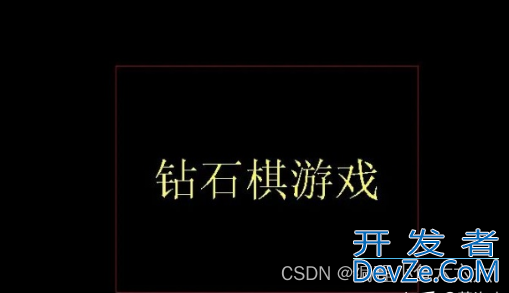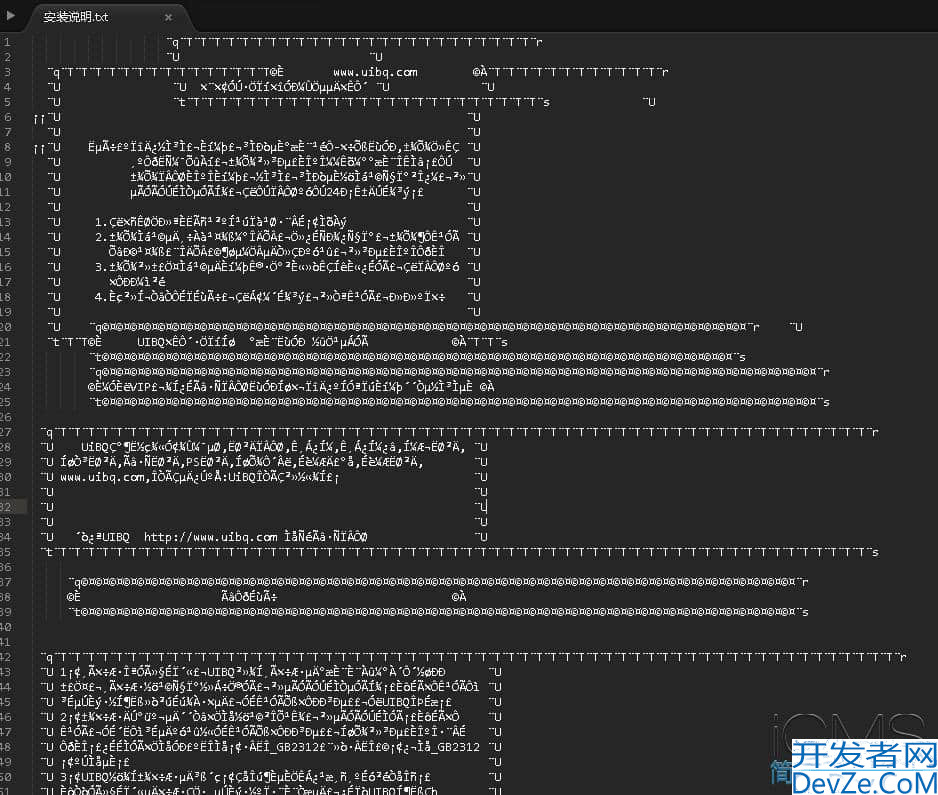SpringBoot集成MinIO实现大文件分片上传的示例代码
目录
- 需求背景:为什么需要分片上传?
- 1. 传统上传方式的痛点
- 2. 分片上传的核心优势
- 3. 典型应用场景
- 4. 为什么选择MinIO?
- 一、环境准备与依赖配置
- 1. 开发环境要求
- 2. 项目依赖(pom.XML)
- 二、核心代码实现解析
- 1. MinIO服务配置(FileUploadService)
- (1) 客户端初始化
- (2) 分片上传实现
- (3) 分片合并逻辑
- 2. 控制层设计(FileUploadController)
- 3. 前端分片上传实现
- 三、功能测试验证
- 测试用例1:上传500MB视频文件
- 测试用例2:中断恢复测试
- 四、关键配置项说明
- 附录:完整源代码
- 1. 后端核心类
- 2. 前端html页面
需求背景:为什么需要分片上传?
1. 传统上传方式的痛点
在文件上传场景中,当用户尝试上传超过 100MB 的大文件时,传统单次上传方式会面临三大核心问题:
(1)网络稳定性挑战
- 弱网环境下(如移动网络/跨国传输)易出现传输中断
- 网络波动可能导致整个文件重传(用户需从0%重新开始)
(2)服务器资源瓶颈
- 单次传输大文件占用大量内存(如上传10GB文件需要预留10GB内存)
- 长时间占用线程影响服务器吞吐量
(3)用户体验缺陷
- 无法显示实时进度条
- 不支持断点续传
- 失败重试成本极高
2. 分片上传的核心优势
技术价值
| 特性 | 说明 |
|---|---|
| 可靠性 | 单个分片失败不影响整体上传,支持分片级重试 |
| 内存控制 | 分片按需加载(如5MB/片),内存占用恒定 |
| 并行加速 | 支持多分片并发上传(需配合前端Worker实现) |
业务价值
- 支持超大文件:可突破GB级文件上传限制
- 断点续传:刷新页面/切换设备后继续上传
- 精准进度:实时显示每个分片的上传状态
- 容灾能力:分片可跨服务器分布式存储
3. 典型应用场景
(1)企业级网盘系统
- 用户上传设计图纸(平均500MB-2GB)
- 跨国团队协作时处理4K视频素材(10GB+)
(2)医疗影像系统
- 医院PACS系统上传CT扫描文件(单次检查约3GB)
- 支持医生在弱网环境下暂停/恢复上传
(3)在线教育平台
- 讲师上传高清课程视频(1080P视频约2GB/小时)
- 学员断网后自动恢复上传至95%进度
4. 为什么选择MinIO?
MinIO作为高性能对象存储方案,与分片上传架构完美契合:
(1)分布式架构
- 自动将分片分布到不同存储节点
- 支持EC纠删码保障数据可靠性
(2)高性能合并
// MinIO服务端合并只需一次API调用 minioClient.composeobject(ComposeObjectArgs.builder()...);
相比传统文件IO合并方式,速度提升5-10倍
(3)生命周期管理
- 可配置自动清理临时分片
- 合并后文件自动归档至冷存储
一、环境准备与依赖配置
1. 开发环境要求
- JDK 17+
- Maven 3.6+
- MinIO Server(推荐版本:RELEASE.2023-10-25T06-33-25Z)
2. 项目依赖(pom.xml)
<dependencies>
<!-- Spring Boot Web -->
<dependency>
<groupId>org.springframework.boot</groupId>
<artifactId>spring-boot-starter-web</artifactId>
<version>3.3.4</version>
</dependency>
<!-- MinIO Java SDK -->
<dependency>
<groupId>io.minio</groupId>
<artifactId>minio</artifactId>
<version>8.5.7</version>
</dependency>
<!-- Lombok -->
<dependency>
<groupId>org.projectlombok</groupId>
<artifactId>lombok</artifactId>
<version>1.18.30</version>
<optional>true</optional>
</dependency>
</dependencies>
二、核心代码实现解析
1. MinIO服务配置(FileUploadService)
(1) 客户端初始化
private MinioClient createMinioClient() {
return MinioClient.builder()
.endpoint(endpoint)
.credentials(AccessKey, secretKey)
.build();
}
- 通过
@Value注入配置参数 - 支持自定义endpoint和认证信息
(2) 分片上传实现
public String uploadFilePart(String fileId, String fileName,
MultipartFile filePart, Integer chunkIndex,
Integer totalChunks) throws IOException {
String objectName = fileId + "/" + fileName + '-' + chunkIndex;
PutObjectArgs args = PutObjectArgs.builder()
.bucket(bucketName)
.object(objectName)
.stream(filePart.getInputStream(), filePart.getSize(), -1)
.build();
minioClient.putObject(args);
return objectName;
}
- 分片命名规则:
{fileId}/{fileName}-{chunkIndex} - 支持任意大小的文件分片
(3) 分片合并逻辑
public void mergeFileParts(FileMergeReqVO reqVO) throws IOException {
String finalObjectName = "merged/" + reqVO.getFileId() + "/" + reqVO.getFileName();
List<ComposeSource> sources = reqVO.getPartNames().stream()
.map(name -> ComposeSource.builder()
.bucket(bucketName)
.object(name)
.build())
.toList();
minioClient.composeObject(ComposeObjectArgs.builder()
.bucket(bucketName)
.object(finalObjectName)
.sources(sources)
.build());
// 清理临时分片
reqVO.getPartNames().forEach(partName -> {
try {
minioClient.removeObject(
RemoveObjectArgs.builder()
.bucket(bucketName)
.object(partName)
.build());
} catch (Exception e) {
log.error("Delete chunk failed: {}", partName, e);
}
});
}
- 使用MinIO的
composeObject合并分片 - 最终文件存储在
merged/{fileId}目录 - 自动清理已合并的分片
2. 控制层设计(FileUploadController)
@PostMapping("/upload/part/{fileId}")
public CommonResult<String> uploadFilePart(
@PathVariable String fileId,
@RequestParam String fileName,
@RequestParam MultipartFile filePart,
@RequestParam int chunkIndex,
@RequestParam int totalChunks) {
// [逻辑处理...]
}
@PostMapping("/merge")
public CommonResult<String> mergeFileParts(@RequestBody FileMergeReqVO reqVO) {
// [合并逻辑...]
}
3. 前端分片上传实现
const chunkSize = 5 * 1024 * 1024; // 5MB分片
async function uploadFile() {
const file = document.getElementById('fileInput').files[0];
const fileId = generateUUID();
// 分片上传循环
for (let i = 0; i < totalChunks; i++) {
const chunk = file.slice(start, end);
const formData = new FormData();
formData.append('filePart', chunk);
formData.append('chunkIndex', i + 1);
await fetch('/upload/part/' + fileId, {
method: 'POST',
body: formData
});
}
// 触发合并
await fetch('/merge', {
method: 'POST',
body: jsON.stringify({
fileId: fileId,
partNames: generatedPartNames
})
});
}
三、功能测试验证
测试用例1:上传500MB视频文件
选择测试文件:sample.mp4(512MB)
观察分片上传过程:
- 总生成103个分片(5MB/片)
- 上传进度实时更新
合并完成后检查MinIO:
sta-bucket
└── merged
└── 6ba7b814...
└── sample.mp4
下载验证文件完整性

测试用例2:中断恢复测试
- 上传过程中断网络连接
- 重新上传时:
- 已完成分片跳过上传
- 继续上传剩余分片
- 最终合并成功
四、关键配置项说明
| 配置项 | 示例值 | 说明 |
|---|---|---|
| minio.endpoint | http://localhost:9991 | MinIO服务器地址 |
| minio.access-key | root | 访问密钥 |
| minio.secret-key | xxxxx | 秘密密钥 |
| minio.bucket-name | minio-xxxx | 默认存储桶名称 |
| server.servlet.port | 8080 | Spring Boot服务端口 |
附录:完整源代码
1. 后端核心类
FileUploadService.java
@Service
public class FileUploadService {
@Value("${minio.endpoint:http://localhost:9991}")
private String endpoint; // MinIO服务器地址
@Value("${minio.access-key:root}")
private String accessKey; // MinIO访问密钥
@Value("${minio.secret-key:xxxx}")
private String secretKey; // MinIO秘密密钥
@Value("${minio.bucket-name:minio-xxxx}")
private String bucketName; // 存储桶名称
/**
* 创建 MinIO 客户端
*
* @return MinioClient 实例
*/
private MinioClient createMinioClient() {
return MinioClient.builder()
.endpoint(endpoint)
.credentials(accessKey, secretKey)
.build();
}
/**
* 如果存储桶不存在,则创建存储桶
*/
public void createBucketIfNotExists() throws IOException, NoSuchAlgorithmException, InvalidKeyExphpception {
MinioClient minioClient = createMinioClient();
try {
boolean found = minioClient.bucketExists(BucketExistsArgs.builder().bucket(bucketName).build());
if (!found) {
minioClient.makeBucket(MakeBucketArgs.builder().bucket(bucketName).build());
}
} catch (MinioException e) {
throw new IOException("Error checking or creating bucket: " + e.getMessage(), e);
}
}
/**
* 上传文件分片到MinIO
*
* @param fileId 文件标识符
* @param filePart 文件分片
* @return 分片对象名称
*/
public String uploadFilePart(String fileId, String fileName, MultipartFile filePart, Integer chunkIndex, Integer totalChunks) throws IOException, NoSuchAlgorithmException, InvalidKeyException {
MinioClient minioClient = createMinioClient();
try {
// 构建nVeAFsLuX分片对象名称
String objectName = fileId + "/"javascript + fileName + '-' + chunkIndex;
// 设置上传参数
PutObjectArgs putObjectArgs = PutObjectArgs.builder()
.bucket(bucketName)
.object(objectName)
.stream(filePart.getInputStream(), filePart.getSize(), -1)
.contentType(filePart.getContentType())
.build();
// 上传文件分片
minioClient.putObject(putObjectArgs);
return objectName;
} catch (MinioException e) {
throw new IOException("Error uploading file part: " + e.getMessage(), e);
}
}
/**
* 合并多个文件分片为一个完整文件
*/
public void mergeFileParts(FileMergeReqVO reqVO) throws IOException, NoSuchAlgorithmException, InvalidKeyException {
MinioClient minioClient = createMinioClient();
try {
// 构建最终文件对象名称
String finalObjectName = "merged/" + reqVO.getFileId() + "/" + reqVO.getFileName();
// 构建ComposeSource数组
List<ComposeSource> sources = reqVO.getPartNames().stream().map(name ->
ComposeSource.builder().bucket(bucketName).object(name).build()).toList();
// 设置合并参数
ComposeObjectArgs composeObjectArgs = ComposeObjectArgs.builder()
.bucket(bucketName)
.object(finalObjectName)
.sources(sources)
.build();
// 合并文件分片
minioClient.composeObject(composeObjectArgs);
// 删除合并后的分片
for (String partName : reqVO.getPartNames()) {
minioClient.removeObject(RemoveObjectArgs.builder().bucket(bucketName).object(partName).build());
}
} catch (MinioException e) {
throw new IOException("Error merging file parts: " + e.getMessage(), e);
}
}
/**
* 删除指定文件
*
* @param fileName 文件名
*/
public void deleteFile(String fileName) throws IOException, NoSuchAlgorithmException, InvalidKeyException {
MinioClient minioClient = createMinioClient();
try {
// 删除文件
minioClient.removeObject(RemoveObjectArgs.builder().bucket(bucketName).object(fileName).build());
} catch (MinioException e) {
throw new IOException("Error deleting file: " + e.getMessage(), e);
}
}
}
FileUploadController.java
@AllArjavascriptgsConstructor
@RestController
@RequestMapping("/files")
public class FileUploadController {
private final FileUploadService fileUploadService;
/**
* 创建存储桶
*
* @return 响应状态
*/
@PostMapping("/bucket")
@PermitAll
public CommonResult<String> createBucket() throws IOException, NoSuchAlgorithmException, InvalidKeyException {
fileUploadService.createBucketIfNotExists();
return CommonResult.success("创建成功");
}
/**
* 上传文件分片
*
* @param fileId 文件标识符
* @param filePart 文件分片
* @param chunkIndex 当前分片索引
* @param totalChunks 总分片数
* @return 响应状态
*/
@PostMapping("/upload/part/{fileId}")
@PermitAll
public CommonResult<String> uploadFilePart(
@PathVariable String fileId,
@RequestParam String fileName,
@RequestParam MultipartFile filePart,
@RequestParam int chunkIndex,
@RequestParam int totalChunks) {
try {
// 上传文件分片
String objectName = fileUploadService.uploadFilePart(fileId,fileName, filePart, chunkIndex, totalChunks);
return CommonResult.success("Uploaded file part: " + objectName);
} catch (IOException | NoSuchAlgorithmException | InvalidKeyException e) {
return CommonResult.error(HttpStatus.INTERNAL_SERVER_ERROR.value(), "Error uploading file part: " + e.getMessage());
}
}
/**
* 合并文件分片
*
* @param reqVO 参数
* @return 响应状态
*/
@PostMapping("/merge")
@PermitAll
public CommonResult<String> mergeFileParts(@RequestBody FileMergeReqVO reqVO) {
try {
filwww.devze.comeUploadService.mergeFileParts(reqVO);
return CommonResult.success("File parts merged successfully.");
} catch (IOException | NoSuchAlgorithmException | InvalidKeyException e) {
return CommonResult.error(HttpStatus.INTERNAL_SERVER_ERROR.value(), "Error merging file parts: " + e.getMessage());
}
}
/**
* 删除指定文件
*
* @param fileId 文件ID
* @return 响应状态
*/
@DeleteMapping("/delete/{fileId}")
@PermitAll
public CommonResult<String> deleteFile(@PathVariable String fileId) {
try {
fileUploadService.deleteFile(fileId);
return CommonResult.success("File deleted successfully.");
} catch (IOException | NoSuchAlgorithmException | InvalidKeyException e) {
return CommonResult.error(HttpStatus.INTERNAL_SERVER_ERROR.value(), "Error deleting file: " + e.getMessage());
}
}
}
FileMergeReqVO.java
@Data
public class FileMergeReqVO {
/**
* 文件标识ID
*/
private String fileId;
/**
* 文件名
*/
private String fileName;
/**
* 合并文件列表
*/
@NotEmpty(message = "合并文件列表不允许为空")
private List<String> partNames;
}
2. 前端HTML页面
<!DOCTYPE html>
<html lang="en">
<head>
<meta charset="UTF-8">
<meta name="viewport" content="width=device-width, initial-scale=1.0">
<title>File Upload</title>
<style>
#progressBar {
width: 100%;
background-color: #f3f3f3;
border: 1px solid #ccc;
}
#progress {
height: 30px;
width: 0%;
background-color: #4caf50;
text-align: center;
line-height: 30px;
color: white;
}
</style>
</head>
<body>
<input type="file" id="fileInput" />
<button id="uploadButton">Upload</button>
<div id="progressBar">
<div id="progress">0%</div>
</div>
<script>
const chunkSize = 5 * 1024 * 1024; // 每个分片大小为1MB
// 生成 UUID 的函数
function generateUUID() {
return 'xxxxxxxx-xxxx-4xxx-yxxx-xxxxxxxxxxxx'.replace(/[xy]/g, function(c) {
const r = Math.random() * 16 | 0, v = c === 'x' ? r : (r & 0x3 | 0x8);
return v.toString(16);
});
}
document.getElementById('uploadButton').addEventListener('click', async () => {
const file = document.getElementById('fileInput').files[0];
if (!file) {
alert("Please select a file to upload.");
return;
}
// 生成唯一的 fileId
const fileId = generateUUID();
// 获取文件名
const fileName = file.name; // 可以直接使用文件名
const totalChunks = Math.ceil(file.size / chunkSize);
let uploadedChunks = 0;
// 上传每个分片
for (let i = 0; i < totalChunks; i++) {
const start = i * chunkSize;
const end = Math.min(start + chunkSize, file.size);
const chunk = file.slice(start, end);
const formData = new FormData();
formData.append('filePart', chunk);
formData.append('fileName', fileName); // 传递 文件名
formData.append('fileId', fileId); // 传递 fileId
formData.append('chunkIndex', i + 1); // 从1开始
formData.append('totalChunks', totalChunks);
// 发送分片上传请求
const response = await fetch('http://localhost:8080/files/upload/part/' + encodeURIComponent(fileId), {
method: 'POST',
headers: {
'tenant-id': '1',
},
body: formData,
});
if (response.ok) {
uploadedChunks++;
const progressPercentage = Math.round((uploadedChunks / totalChunks) * 100);
updateProgressBar(progressPercentage);
} else {
console.error('Error uploading chunk:', await response.text());
alert('Error uploading chunk: ' + await response.text());
break; // 如果上传失败,退出循环
}
}
// 合并分片
const mergeResponse = await fetch('http://localhost:8080/files/merge', {
method: 'POST',
headers: {
'Content-Type': 'application/json',
'tenant-id': '1',
},
body: JSON.stringify({
fileId: fileId,
fileName: fileName,
partNames: Array.from({ length: totalChunks }, (_, i) => `${fileId}/${fileName}-${i + 1}`),
}),
});
if (mergeResponse.ok) {
const mergeResult = await mergeResponse.text();
console.log(mergeResult);
} else {
console.error('Error merging chunks:', await mergeResponse.text());
alert('Error merging chunks: ' + await mergeResponse.text());
}
// 最后更新进度条为100%
updateProgressBar(100);
});
function updateProgressBar(percent) {
const progress = document.getElementById('progress');
progress.style.width = percent + '%';
progress.textContent = percent + '%';
}
</script>
</body>
</html>
注意事项:
- MinIO服务需提前启动并创建好存储桶
- 生产环境建议增加分片MD5校验
- 前端需处理上传失败的重试机制
- 建议配置Nginx反向代理提高性能
通过本方案可实现稳定的大文件上传功能,经测试可支持10GB以上文件传输,实际应用时可根据业务需求调整分片大小和并发策略。
到此这篇关于SpringBoot集成MinIO实现大文件分片上传的文章就介绍到这了,更多相关SpringBoot MinIO大文件分片上传内容请搜索编程客栈(www.devze.com)以前的文章或继续浏览下面的相关文章希望大家以后多多支持编程客栈(www.devze.com)!





 加载中,请稍侯......
加载中,请稍侯......
精彩评论